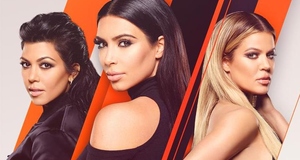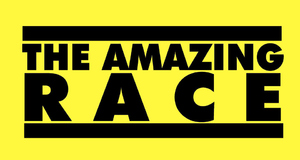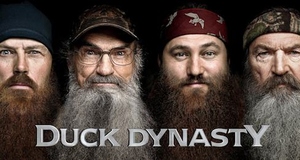Good Girls Gone Bad: Race and Gender in Oxygen's The Bad Girls Club
By
2012, Vol. 4 No. 07 | pg. 1/3 | »
IN THIS ARTICLE
KEYWORDS
“Reality television” programs attempt to portray normal people in everyday situations. In recent years, the genre has boomed and essentially changed the landscape of television networks.1 As reality programming continues to dominate television ratings, it has become increasingly commercialized both domestically and abroad. Meanwhile, many reality shows continue to reinforce traditional race and gender based stereotypes. Oxygen Network’s new hit reality show The Bad Girls Club (2006-present) is a product of this distorted format that supports profit-making and negative stereotypes under the guise of "reality" television. This paper explores some of these misrepresentations using elements of Douglas Kellner’s multiculturalist approach. By critically analyzing and comparing various episodes, cast choices, scenes and other core issues within the context of the seven seasons of The Bad Girls Club (BGC), continuous use of negative stereotyping is revealed. In terms of gender, this paper shows the paradoxical nature of BGC by explaining how the show’s format has digressed from attempting to rehabilitate its cast members to instead portraying women as unusually violent. From a race lens, the producers casting of an increasing number of racial minorities for drama to reinforce various negative stereotypes is also considered. In the end, the goal of this paper is to highlight the destructive, formulaic, and profit driven paradigm that constitutes “reality television.”Overview of Reality Television and KellnerCummings (2002) defines “reality television” (RT) as “programmes that feature members of the public in unusual situations, often competing for a prize and often involving audience participation,” (p.xii). Hill (2005) suggests RT is “a genre of television programming that presents purportedly unscripted dramatic or humorous situations, documents actual events and usually features ordinary people instead of professional actors...” 2 Because “reality television” often exaggerates and sensationalizes reality by placing participants in often exotic locations and abnormal situations, 3 communication critics constantly debate the legitimacy of the term “reality television.” 4 They suggest these types of shows are “fast, cheap, and totally addictive” and primarily appeal to many networks because they cost less to produce than dramas or sitcoms. 5 Additionally, casting directors do not have to hire A-list actors, allowing them to manipulate participants by conferring the illusion of an “overnight celebrity status” as a succedaneum for compensation. 6 Most critics proffer loosely applying the term “unscripted drama.” 7 These critics posit this term is apt since segment television producers usually persuade and direct participants off-screen to act in specific ways, 8 while “story editors” manipulate portrayals of certain events and speech through post-production editing techniques. 9 Other communication critics suggest that rigidly defining RT ignores evolving subgenres that exist.10 For the purpose of understanding the premise of BGC, it shall be referred to as a combination of a documentary drama or “docudrama” and a social experiment. Docudramas tend to feature documentary-style events with dramatized re-enactments of events that occurred in the past, but are portrayed as reality and edited for entertainment purposes.11 Social experiments are intended to produce drama and conflict with the goal of transforming participants’ lifestyles and actions for the better. 12 This duality and distortion produced by “reality television” renders the application of Kellner’s multiculturalist approach to such cultural texts important for the purpose of critically critiquing BGC. Kellner suggests that using a cultural studies approach to media allows individuals to read and interpret their own culture critically by manifesting how the dominant culture reproduces certain forms of racism, sexism and biases against members of subordinate classes, social groups or alternative lifestyles. 13 Kellner posits that “media images help shape our view of the world and…what we consider good or bad, positive or negative, moral or evil” and that media “…contribute to educating [the public] how to behave and what to think, feel, believe, fear…and what not to.” 14 He adopts a cultural studies approach to media text, which shows “how media culture articulate the dominant values, political ideologies and social developments and novelties of the era”15 in order for individuals to critically evaluate, interpret and critique our own culture. 16 Using a multiperspectival approach that discusses the production and political economy, engages in the textual analysis and studies the reception of audiences and use of cultural texts is key to understanding the multiculturalist perspective by “[enabling] readers to analytically dissect artifacts of contemporary media culture and gain power over their cultural environment.”17 Thus, a critical cultural studies analysis uses all of these elements complementary rather than separately.18 For instance, examining production values is important because it inserts text into the culture in which they are produced.19 Examining the text of certain artifacts and content allow us to see how linguistic and nonlinguistic ‘signs’ in television, for example, reveal how codes and forms of particular genres imply certain meanings.20 Finally, audience reception and use of media culture allows us to see the political effects texts produce and how audiences utilize them.21 Oxygen’s Bad Girls Club warrants an oppositional reading and interpretation of the show from a racial and gender multiculturalist perspective. Gender: From Bad to UglyThe premise of BGC is a paradox within itself: while the show attempts to rehabilitate women, the show ultimately invites viewers, mostly men and young girls, to “gaze” at its subjects’ “bad behavior” under a blurred lens. Bunim-Murray Productions (BMP), producers of other popular and controversial docudramas The Real World and Keeping Up With the Kardashians, cast and film the escapades of seven ‘rebellious’ women with abnormally strong personalities and a number of psychological and behavioral problems as they live together for three months. Mostly, the women verbally and/or physically fight with each other or locals at bars or clubs, consume excessive amounts of alcohol, engage in numerous acts of sexual activity and/or take lavish trips to exotic locations. These self-proclaimed “bad girls” are supposed to change their pernicious behavior and accomplish specific goals by the end of their three-month stay in a luxurious mansion. 22 As part of the “zero violence tolerance policy,” these “bad girls” are not supposed to engage in violence with one another or the production team or risk eviction.Continued on Next Page » Suggested Reading from Inquiries Journal
Inquiries Journal provides undergraduate and graduate students around the world a platform for the wide dissemination of academic work over a range of core disciplines. Representing the work of students from hundreds of institutions around the globe, Inquiries Journal's large database of academic articles is completely free. Learn more | Blog | Submit Latest in Business & Communications |
















